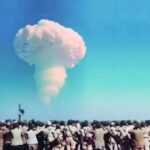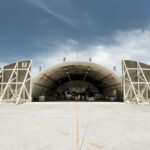Obama’s test: Bringing order to the national security policy process
By Gordon Adams | January 26, 2009
During the Bush administration, funding for the Defense Department, State Department, and Department of Homeland Security more or less doubled. But in all three cases, the goal of the budget increases wasn’t to create functioning, efficient, and effective bureaucracies. Instead, it was to push a political agenda–at the cost of effective management. As a result, all three departments emerge from the last eight years less focused, less disciplined, and less effective.
Beyond the substantive need to change U.S. foreign and national security policy, the challenge the Obama administration now faces is how to restore focus, discipline, and balance to the institutions that shape and implement these policies. To do so, the new administration will need to focus diplomacy and foreign assistance on long-term strategic goals, rebalance the toolkit of statecraft, and bring coherence to a widely dispersed set of institutions.
Ensuring that the Defense Department and the military are properly balanced by strong and agile civilian institutions is a major priority.”
There will be many ways to measure the new administration’s progress on these fronts. For instance, at State and USAID, I’ll be watching for the following:
- Will the administration–and namely Secretary of State Hillary Clinton–create an institutionalized capability for strategic and budgetary planning, building on the Office of the Director of Foreign Assistance that was established in 2006? Or will State continue to default to a culture that resists planning, reacts to events as they happen, and disperse the nascent planning capabilities now in place?
- Will the administration bring order and consolidation to the many civilian institutions of U.S. foreign policy across the government–from State to USAID to the Treasury Department to the Department of Agriculture and beyond? Or will it allow agencies to remain dispersed without developing a State or White House capacity to bring them together?
- Will the administration continue the Bush practice of seeking too little funding for foreign policy areas such as food aid and humanitarian relief, only to ask later for supplemental funds that ride on the back of Defense’s “emergency” war funding request?
- Will the administration build a capacity based at USAID to conduct civilian operations overseas in contingency and fragile-state situations, rather than try to duplicate existing operational capabilities?
- Will the administration transform the foreign service so it brings in a new type of recruit who receives training throughout his or her career, is assigned across offices and agencies to learn the skills today’s diplomats must have, and is rewarded with top diplomatic appointments? And will the administration make a concerted effort to increase the number of U.S. foreign-service officers?
- Will the administration revitalize and staff our public diplomacy, creating a more focused, autonomous capability to take Washington’s message overseas?
- Will the administration build a strong development and foreign assistance capability within USAID and integrate development and long-term investment into the core missions of U.S. statecraft at the heart of State itself?
- Will the administration give State the authority it needs over U.S. security and foreign assistance, which State can plan in cooperation with Defense, but can also integrate into broader U.S. foreign policy and national security goals? Or will it continue to give Defense the responsibility for our overseas engagement, narrowing its strategic purpose, muddying the military mission, and putting a uniform face on overseas U.S. operations?
Ensuring that Defense and the military are properly balanced by strong, agile civilian institutions is a major priority. Therefore, reform must also take place at Defense. There, I’ll be watching for the following changes:
- Will the administration bring order and discipline to the Defense budget process? Or will it continue to allow Defense to march toward a trillion dollar annual budget without setting priorities or making hard choices? (A side note: If the administration caves in on future budget plans laid out by the military, the defense budget would increase by another $70 billion or more in fiscal year 2010 and $450 billion over the next six years.)
- Will the administration link future defense budgets to plans that make clear choices about the role of military force in overall U.S. national security policy? Or will it buy every kind of force and piece of hardware that the services want for their endlessly expanding portfolio of missions?
- Will the administration halt Defense’s eight-year tradition of loading up emergency funding requests for the wars in Iraq and Afghanistan with spending for non-war needs such as additional hardware and force restructuring? Or will “supplementals” continue to be used as piggy banks to fund defense programs undisciplined by the regular budget process?
- Will the administration ensure that Defense’s new portfolio of authorities over security assistance and foreign assistance established during the Bush years are properly transitioned to State, retaining only those programs that are core to military missions? Or will it continue to expand Defense’s missions into more nation-building, economic development, and public diplomacy?
- Will the administration make tough choices about future military hardware and weapons programs, canceling those that no longer fit with the core military missions of the twenty-first century?
As for Homeland Security, which suffers from internal chaos, a lack of strategic direction, and doesn’t have responsibility for a fair part of overall U.S. investment in, ahem, homeland security, I’ll be watching for the following:
- Will the administration create a true, high-level strategic planning and budgeting process? Or will the component parts of the department continue to plan their own priorities and budgets, to be stapled together at the top with no overarching strategic focus?
- Will the administration broaden the department’s strategic focus from a myopic concern with terrorism to disaster prevention and resilient response? Or will fear of a terrorist attack, however unlikely, continue to provide the mechanism for organizing and selling the department’s budget?
Most seriously, the capacity of the White House to strategically plan and oversee the operations of the executive branch has seriously eroded since 2000. It needs to be not only restored, but given a more focused mission of strategic planning and interagency oversight and integrated with budgetary planning. With this in mind, I’ll be watching for the following at the White House:
- Will the administration transform the National Security Council (NSC) into an institution that has primary responsibility for shaping the president’s national security strategy and policy priorities? Or will it leave policy definition and priority setting to disparate agencies without central coordination?
- Will the administration allow the NSC to institute and execute a formal national strategy review that sets priorities and, working with the Office of Management and Budget (OMB), leads to a guidance for agencies with regard to their responsibilities to execute those strategic priorities? Or will there be, as in the past, no real strategic direction or program and budget guidance from NSC and OMB to the agencies?
- In setting priorities, will the administration use the NSC strategically to focus on key problems such as failed states, energy independence, climate change, and the direction of development and foreign assistance policy?
- Will the administration task the NSC, along with OMB, to institutionalize processes for meshing planning and operations between agencies? Or will NSC’s interagency process continue to be a mere collection point for what agencies are doing, with little coordination or priority setting?
Rebalancing, strengthening, and focusing the tools of U.S. statecraft may seem secondary to getting policy right in Iraq, Afghanistan, and Pakistan–to say nothing of counterterrorism operations and nonproliferation policy. But in the end, none of these policies can be pursued effectively without a clear, effective, and agile set of institutions and processes. The experience of the past eight years is ample demonstration of the need for reform. Now, I’ll be watching to see if the Obama administration can successfully direct a positive turnaround.
Together, we make the world safer.
The Bulletin elevates expert voices above the noise. But as an independent nonprofit organization, our operations depend on the support of readers like you. Help us continue to deliver quality journalism that holds leaders accountable. Your support of our work at any level is important. In return, we promise our coverage will be understandable, influential, vigilant, solution-oriented, and fair-minded. Together we can make a difference.
Topics: Columnists, Nuclear Weapons















